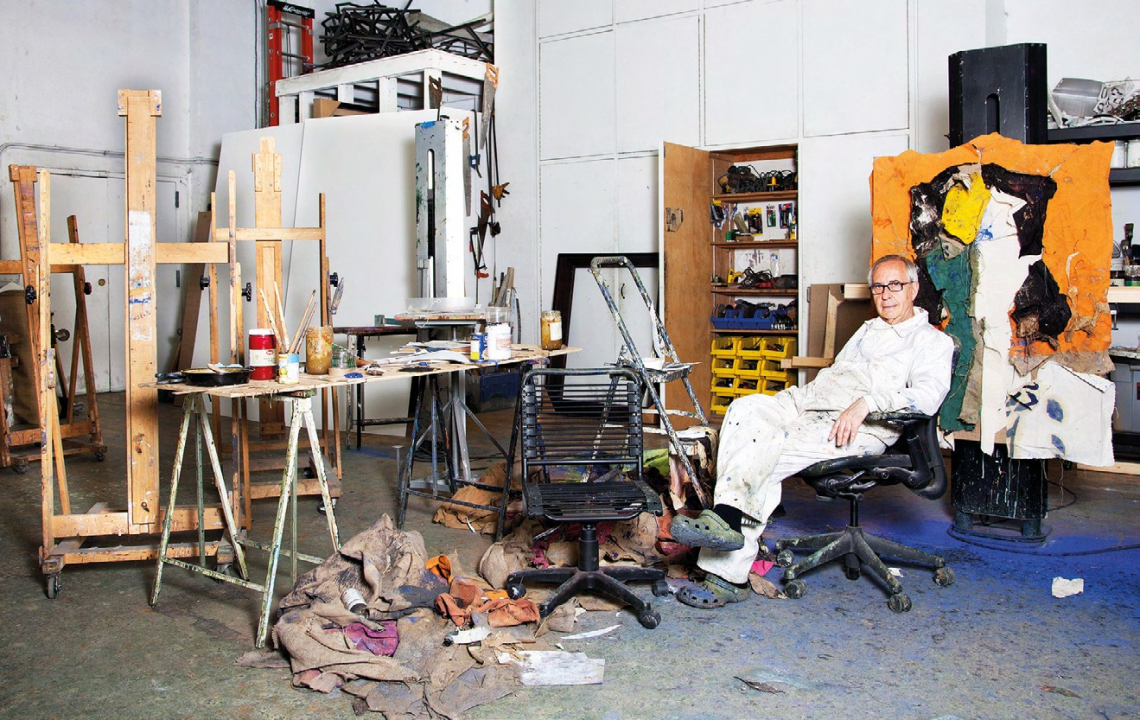Spanish painter & sculptor.


Spanish painter & sculptor.
PEOPLE

If you’ve walked down Orchard Road recently, you would’ve noticed a line of nine massive head sculptures adorned with motifs such as butterflies and flowers, and a row of eight bronze sculptures of a woman in a frock at Ion2. They are the masterpieces of award-winning Spanish artist Manolo Valdes, whose sculptures are in town in his first exhibition in Asia, supported by The Singapore Tourism Board. The exhibition will move to Gardens by the Bay after Oct 15.
Born in Spain in 1942, Manolo first discovered his passion for the arts when he attended the Fine Arts Academy of San Carlos in Valencia. He, along with two artist friends – Rafael Solbes and Joan Toledo – formed the art collective Equipo Cronica in 1965 that produced often politically motivated pop art to criticise the tyrannous rule of Spanish dictator Francisco Franco.
After the death of Rafael in 1981, Manolo embarked on a solo career focusing on Spanish historical motifs, and has been based in New York for the last 25 years.
We speak to the warm and sprightly artist through his wife, Rosa, his translator for this interview.
How has Spain and your birth city of Valencia influenced you as an artist?
It is not just Valencia that has influenced me, but also the rest of Spain and greater Europe, especially France. When I was growing up in Valencia, it was very much a provincial city, so what it could offer on its own was limited.
The Fine Arts Academy that I went to at 15 was very traditional; it was still teaching things that were taught in the 19th century. So when I saw art that my school hadn’t exposed me to, those were a shock to me. I remember when I first saw Canyon by Robert Rauschenberg – featuring a stuffed eagle as its centrepiece – which appalled me. I thought: “You mean you can stick an eagle in the centre like that?”
That’s when I discovered that there are no limits to what you can do with art. That’s when I discovered freedom.
Diego Velazquez’s Las Meninas inspired your series of sculptures called Meninas, which are on display here. Why do you think this painting has been such a prevailing inspiration?
You never totally know why something captures you, or how it comes into your life. I think it is because I love those paintings. When I saw Velazquez’s painting in the Prado museum, I fell in love with it, along with many other paintings by him.
But I am not alone in my adoration. Las Meninas has inspired novels, poems, paintings, music… it has the power to draw people from all fields. It is incredible how the painting has inspired so many.



Does your art have a message?
Looking at art and consuming it makes me happy. I like to think that my art will make other people happy. When people ask me: ‘What’s art?’, I answer: ‘Anything that makes you happy’. That’s it.
Has Singapore inspired you so far?
As an artist, I am like a hunter who is always seeking images for inspiration. While I’m in a place as different to where I come from as Singapore, you are even more expectant for that inspiration, perhaps even when walking on the streets.
The day after we landed here, we took some pictures of orchids at Gardens by the Bay because the orchids there are different from the ones in New York. They are more exotic, and the way that they grow and hang is different, and I was inspired by their composition. It is not the perfection of an image that is desired, but more of the way that they are made, so that I can manipulate that when I make my art.

Is there a subject you’ve never painted, but would like to?
As soon as I see something that catches my eye, it becomes a potential subject for a future work. In New York, I once saw a broken umbrella lying by the street after a rainstorm and the image stuck in my mind. Just like that, umbrellas became a potential subject when, prior to that, I never considered them for my work.
In this manner, a subject often comes to you. Shop windows in Madison Avenue and Fifth Avenue in Manhattan, where I like to go shopping, are always inspiring. Cities like New York and Singapore offer no shortage of visual stimuli to provide artistic inspiration.






text ISABELLE TOW photos RICARDO SANTONJA, OPERA GALLERY























